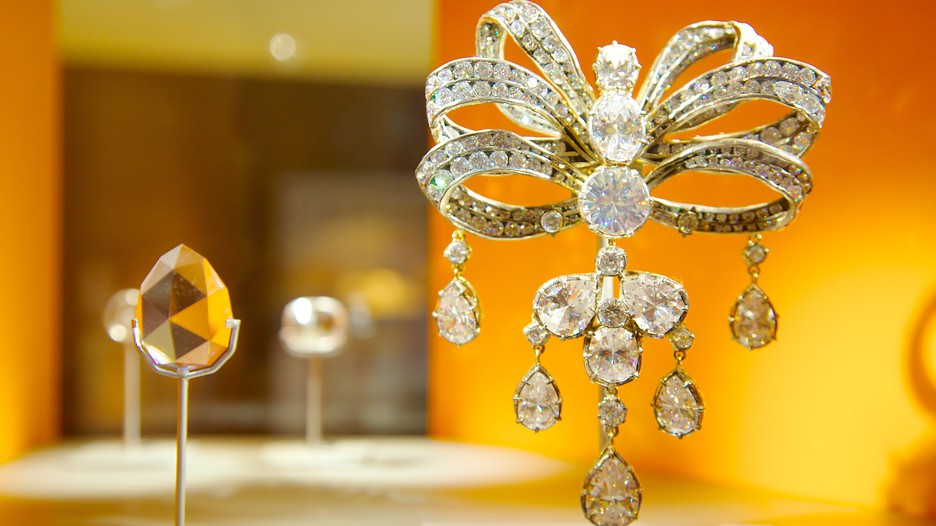The Diamond
Museum in Amsterdam takes you on a journey that started about three
billion years ago when diamonds were formed, and ends with the diamond
polishing process as it’s done today.
For centuries, Amsterdam was an important center for diamond production, employing generations of mainly Jewish diamond polishers. The former “city of diamonds” lost this status in World War II, when most Dutch Jews were either murdered by Nazis or left the country of their own free will. The diamond industry in The Netherlands never fully recovered, but is still active today.
Head to the Diamond Museum to admire the small, yet impressive collection of gemstones and jewelry, plus replicas of world-renowned diamonds. The museum experience begins with a short film illustrating how diamonds are formed under the earth. This is a great orientation to the collection of rings, necklaces and brooches.
Marvel at the House of Oranje-Nassau section, which contains replicas of some of the Dutch Royal family’s most important heirlooms. There are several videos, one about infamous diamond robberies. Another movie explains how to find out if a diamond is fake — try out the technique for yourself! Discover how the South-African De Beers company became the biggest producer of rough diamonds in the world. At the exhibit Amsterdam, City of Diamonds, informative signs describe how the Dutch capital was the center of diamond polishing and trade for 400 years.
Admire the bejeweled Japanese katana, a sword created by a Dutch artist. She used Murano glass, and a jewel designer set it with 1967 diamond pieces and 494 rubies. A rotating exhibit room showcases diamond-related items, borrowed from other collections from all over the world.
The Diamond Museum looks out over the Museumplein. The nearest tram stop is Hobbemastraat. You can also take the canal boat tour to the dock at Rijksmuseum and walk from there. There are parking lots in the city center, but spaces are limited.
The museum is open daily and you should allow about an hour for your visit.
For centuries, Amsterdam was an important center for diamond production, employing generations of mainly Jewish diamond polishers. The former “city of diamonds” lost this status in World War II, when most Dutch Jews were either murdered by Nazis or left the country of their own free will. The diamond industry in The Netherlands never fully recovered, but is still active today.
Head to the Diamond Museum to admire the small, yet impressive collection of gemstones and jewelry, plus replicas of world-renowned diamonds. The museum experience begins with a short film illustrating how diamonds are formed under the earth. This is a great orientation to the collection of rings, necklaces and brooches.
Marvel at the House of Oranje-Nassau section, which contains replicas of some of the Dutch Royal family’s most important heirlooms. There are several videos, one about infamous diamond robberies. Another movie explains how to find out if a diamond is fake — try out the technique for yourself! Discover how the South-African De Beers company became the biggest producer of rough diamonds in the world. At the exhibit Amsterdam, City of Diamonds, informative signs describe how the Dutch capital was the center of diamond polishing and trade for 400 years.
Admire the bejeweled Japanese katana, a sword created by a Dutch artist. She used Murano glass, and a jewel designer set it with 1967 diamond pieces and 494 rubies. A rotating exhibit room showcases diamond-related items, borrowed from other collections from all over the world.
The Diamond Museum looks out over the Museumplein. The nearest tram stop is Hobbemastraat. You can also take the canal boat tour to the dock at Rijksmuseum and walk from there. There are parking lots in the city center, but spaces are limited.
The museum is open daily and you should allow about an hour for your visit.
